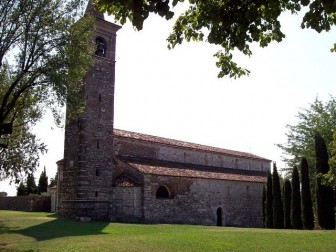Montichiari

Dominated by the cupola of the local church and the castle, Montichiari is an elegant though ancient town; in the surrounding area pre-Roman objects, Roman bronzes and mosaics have been found.
The present Bonoris Castle was built on the ruins of an ancient medieval fortress and the Parish church was built in the 1700’s by Gian Battista and Antonio Marchetti and designed by Sorattini.
Inside is the “Last Supper” by Romanino. Not far from the town and on a hill stands the church of S. Pancrazio; built in the 12th century, it is a fine example of Romanesque architecture.
Leno
Desiderius, king of the Longobards, founded a monastery here in 758 which became one of the most important in north Italy.
Today, only two lions at the entrance to the Parish church and some objects (among which are a few gold Longobard crosses) in the local Museum remain from the original buildings, destroyed for good in the 18th century.
The museum is housed in the town council building and has objects that date from prehistoric times to the Longobard period.
In Porzano it is possible to visit a church, which houses a painting by Moretto.
Manerbio
This town was called “Vicus Minervae” in Roman times and was an important fortified post in the 10th century. Today Manerbio is a large agricultural and commercial centre.
The Civic Museum holds archaeological objects found on the Brescian plain including some from Celtic tombs (from which come also the silver medallions of Manerbio now in the Roman Civic Museum in Brescia). The 18th century parish church of San Lorenzo contains fine works of art including “Madonna with Child and Saints” by Moretto.
A few kilometres away there is Villa Lechi at Montirone with a beautiful Italian-style garden.
It was guilt between 1738 and 1746 and is undoubtedly one of the most sumptuous houses n the province. It is still private property.
Photo: Ricc_HB74
